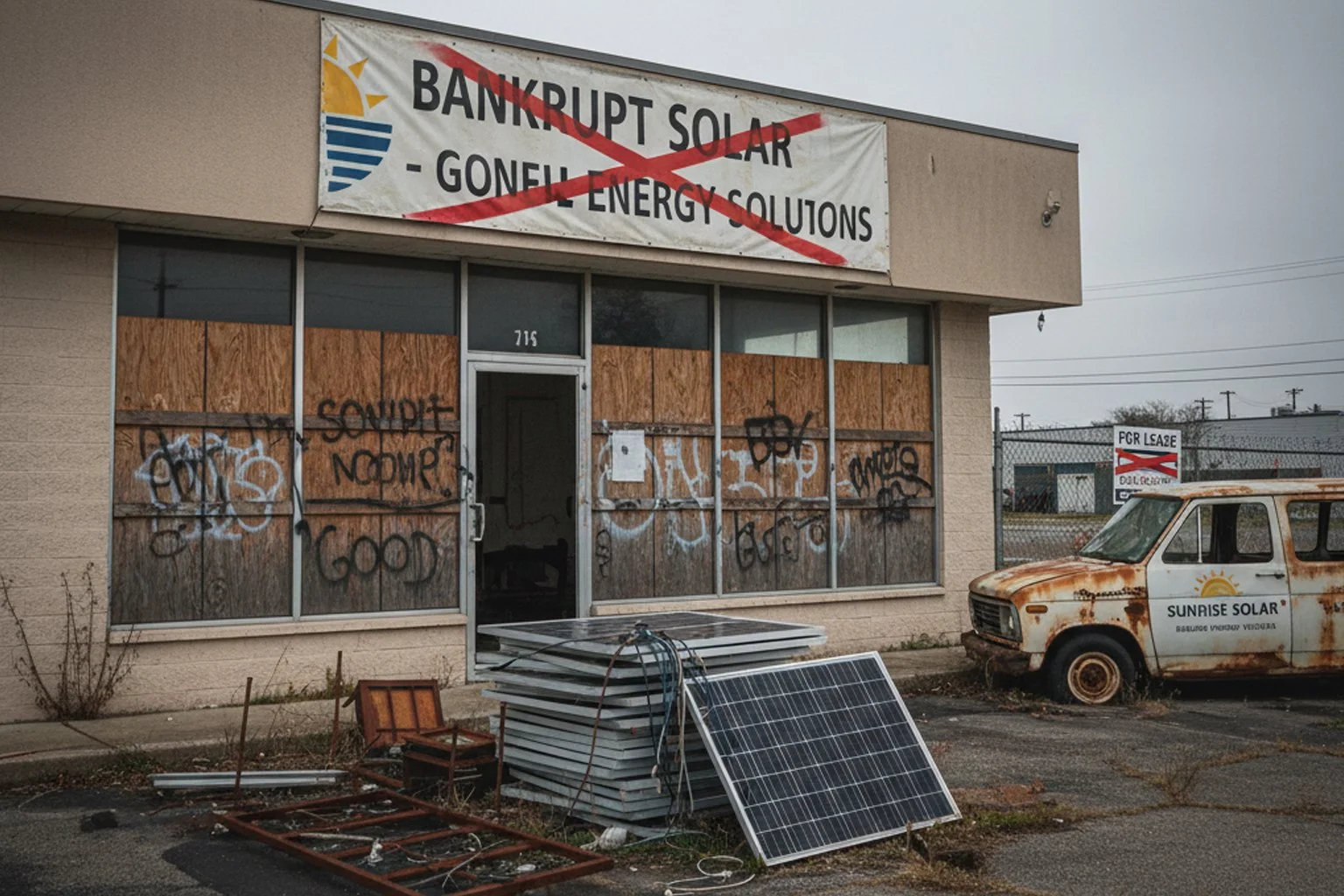What Happens If Your Solar Installer Goes Out of Business?
Behind every closed solar shop are homeowners still trying to keep the lights on.
When you go solar, you expect your installer to be around for decades — just like your panels. But what if they aren’t?
Over the past few years, hundreds of small and mid-size solar companies have gone out of business. Rising equipment costs, tighter financing rules, and rapid policy changes have squeezed profit margins, leaving many homeowners stranded with what’s known as an “orphaned system.”
What Happens When a Solar Installer Folds
If your solar company disappears, your system doesn’t suddenly stop working. Your panels will keep producing power as long as the sun’s shining. But if something breaks — an inverter, a monitoring gateway, a roof penetration — you’ll need to know where to turn.
Here’s the good news: you still have rights and coverage.
Manufacturer warranties stay intact. Your panels and inverters are warrantied by the manufacturer, not the installer. You can usually file a claim directly or through a new service provider.
Monitoring and apps can often be transferred. If your installer’s monitoring account was closed, a replacement company can re-register your system under a new account.
Repairs and inspections can be handled by any licensed contractor qualified in solar. Viva Energy routinely helps homeowners who’ve lost contact with their original installer.
Why So Many Solar Companies Close
The solar boom brought a lot of newcomers to the industry — some undercapitalized, some overly optimistic. Inflation, reduced state incentives, and supply chain swings have exposed weak business models. It’s frustrating, but it doesn’t mean solar itself is unstable — it means not every installer built a sustainable business.
How Viva Energy Helps “Orphaned” Systems
If your original installer is no longer around, Viva Energy can help you re-establish support and system performance. Our process usually starts with:
Reviewing your system specs and equipment.
Checking your monitoring or production data.
Running a physical inspection to identify issues.
Coordinating warranty claims if eligible.
Re-establishing monitoring and performance alerts.
Whether you just need an inverter swap or full troubleshooting, we can get your system back to peak performance — and give you a support team that’s not going anywhere.
How to Protect Yourself Before It Happens
If your current installer is still in business, there are steps you can take now:
Ask for a copy of all system documentation, including serial numbers and monitoring credentials.
Confirm warranty ownership and registration with each manufacturer.
Make sure your monitoring login is tied to your personal email, not your installer’s.
Solar is a 30-year technology — but installer lifespans vary. The safest way to protect your investment is to work with a company built to last.

